|
Current Issue - Spring/Summer 2013 Show Back Issues |
| |||
Selecting a Christmas TreeBy Terrill Collier 
The annual ritual of selecting the perfect Christmas or holiday tree will soon be upon us. You may be asking the question; shall I do a fresh cut, living or fake tree this year? Being a tree aficionado, I refuse to entertain the notion of a fake tree. Nothing sparks the memories of Christmases past like the fresh scent of evergreens wafting throughout the house. My family has the tradition of going out and cutting our Christmas tree. We enjoy the ritual of selecting the perfect tree after much debate and comparison. Plus I don’t think fake trees are really sustainable (what are they really made of?) and when thrown away end up in a land fill. Real trees are recyclable and biodegradable. So the real question is live or fresh cut? While live trees win out as being the most sustainable option, you need a place to plant it after the holidays. Also the inside house is a harsh environment for a live tree. Typically it is too warm, dry for evergreens and likely the root ball will dry out while indoors causing your live tree to expire. The following is a list of the most popular choices for Christmas trees and tips on how to care for them. Noble FirThe Noble Fir is deep green in color and has unusually lovely branch
shape. Boughs of this tree are often made into fresh wreaths. Its branches
are sturdy yet the needles are not too sharp to decorate easily. Noble's
branches have good spacing between branches so it's easy to hang ornaments
on them.
Douglas FirA Douglas Fir is beautiful Christmas tree with soft shiny green needles.
It is the most common tree in our area. Sheared trees are very thick and
may be hard to hang large ornaments. If you like the “Charlie Brown” type
tree choose a non-sheared form. Grand FirThe Grand Fir has a glossy dark green color with needles that are
1 to 1 1/2 inches long. This tree is soft to the touch and may not be able
to hold heavier ornaments. It is often sheared but I like them more open
and natural. Fraser FirThe Fraser Fir has attractive 1" needles are silvery-green and soft
to the touch. The Fraser is easy to decorate because of good spacing between
branches and hold heavier ornaments. The trees grow to almost perfect shapes
and have excellent needle retention. Not as widely grown as the above trees. Other varietiesOther Christmas tree varieties more infrequently found include: Scotch pine, blue spruce and Nordmann fir. Caring for Your Fresh Cut Christmas Tree
|

One of the eight warning signs of a hazard tree is a tree that has begun to lean. Pay close attention to trees that have recently moved from a vertical position. 8 Warning Signs of Hazard Trees(What every property owner should know)Every year, especially during wind or ice storms, trees will fall or break,
causing property damage, power outages, and injury. While some tree failures
are unpredictable, many can be prevented. By inspecting your trees for warning
signs, many potential problems can be corrected before problems arise. 1 — HISTORYPast tree care, construction and landscape activities can affect the health of your trees. Construction, trenches, and tree topping can all have adverse effects on your tree. If roots have been cut or disturbed, the tree may become unstable.2 — LEANTrees do not necessarily grow straight up. However, trees with a significant lean may indicate a problem. Look for cracked soil and exposed roots around the base of the tree which may indicate the tree has recently begun to lean.3 — MULTIPLE TRUNKSSome trees develop multiple trunks. Trees with multiple trunks can break if the trunks are weakly attached. Trees with large trunks with splits or cracks have a high failure potential. Inspect these trees for cracks or splits where the trunks meet.4 — WEAKLY ATTACHED BRANCHESInspect branches where they attach to the trunk. Tight V-shaped forks are more prone to break than open U-shaped unions. Trees with splits, cracks, and/or several branches arising from the same point on the trunk may also present problems.5 — CAVITIES & DECAY POCKETSInspect the trunk or branches for peeling bark and hollow or decayed areas. Large decay pockets and decay where branches meet the trunk can indicate serious structural problems. Mushrooms or conks growing on or at the base of a tree are signs of decay-causing fungus.6 — TRUNK & BRANCH CRACKSInspect the trunk and large branches for cracks. Deep, large cracks indicate structural weakness in the tree andneed careful evaluation. 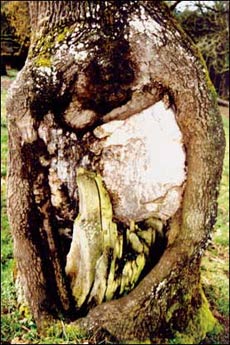
This oak tree with a large trunk wound is one example of a decay pocket 7 — HANGERSHangers are broken branches still lodged in the tree. Whether partially attached or separated completely from the trunk, hangers are likely to fall and should be removed. Stubs left by broken branches should be removed to prevent spread of decay.8 — DEADWOODDead branches, or deadwood, will eventually fall. Branches over two inches in diameter can cause serious damage when they fall. Removal of small diameter (less than 1 inch) deadwood may not be critical, but large deadwood should not be ignored.What can you do to make your trees safer?
What can Collier Arbor Care Certified Arborists do for you?Depending on your tree care needs, a Collier Arborist might…
Going Solar, Staying Sustainable During
sunny weather, this 15kw solar system provides all the power that Collier Arbor
Care’s office needs — plus extra that it sends back to the electric grid. During
sunny weather, this 15kw solar system provides all the power that Collier Arbor
Care’s office needs — plus extra that it sends back to the electric grid.
The new solar panels at the office became operational this July just in time
to take advantage of the sunny summer weather. We have a 15kw system that supplies
100% of our power needs during sunny weather. At times, it exceeds the amount
of power we use and sends the extra electricity back to the grid. Power generated by the array also charges our battery-powered lawn mower that we use to cut our eco-lawn. This practice is part of our sustainable landscape maintenance plan. Our solar electric system is only one element of our sustainability initiative at Collier Arbor Care. Our goal is to maintain our business property as well as our client’s properties using sustainable methods. An example is our 100% organic soil health care program for plant nutrition and enhancing soil biology featuring compost tea and organic fertilizer. Join us in our ongoing efforts to promote sustainability — both indoors and in your landscape. |
|
Home |
Services |
The Arbor Advisor |
Garden Calendar |
About Us |
Fact Sheets |
Contact Us |
Site Map Collier Arbor Care Portland 503-722-7267 Vancouver (360) 693-6056 Site contents and design ©2013 Collier Arbor Care |
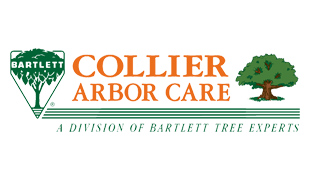






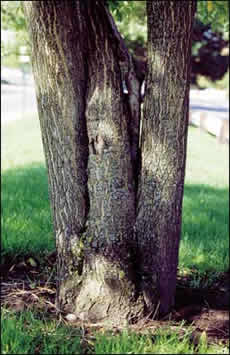
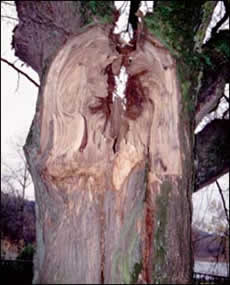
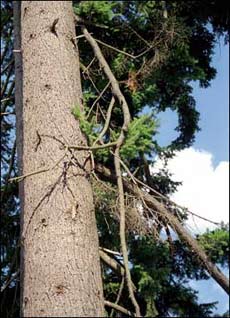
 top »
top »